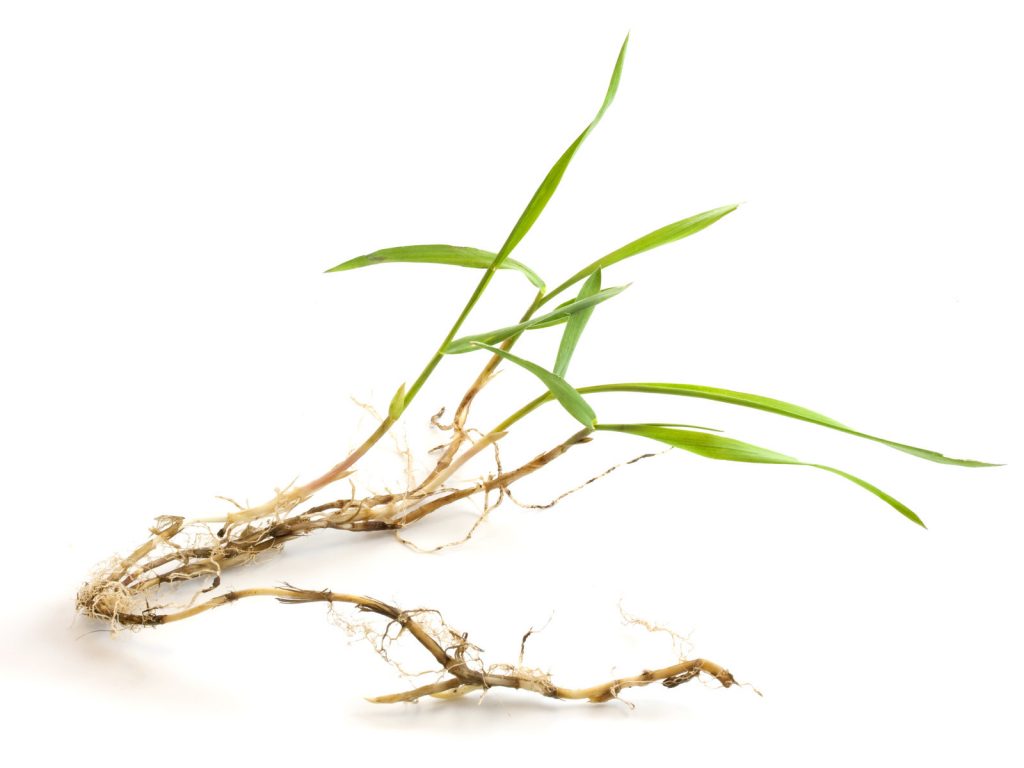
There are plenty of similarities between Bermuda grass and Crabgrass. For instance, they both grow quickly, dominate other plants, and can overwhelm your lawn if left unchecked. However, Bermuda grass, if controlled and maintained, makes for a beautiful, thick, and attractive lawn. Alternatively, Crabgrass is never considered a desirable turf. So when it comes to Bermuda grass vs. Crabgrass, can you tell the difference?
Of course, the biggest difference between Bermuda grass and Crabgrass is that one is a highly desirable lawn grass and one is a highly undesirable weed. But why is this the case? How are these two types of grass similar, and what sets them apart? Let’s dive in and learn all about Bermuda grass vs. Crabgrass.
Bermuda Grass
Bermuda grass is a hardy warm-season grass. It’s commonly used as turfgrass in the southern United States. Sometimes farmers grow Bermuda grass in pastures as forage for livestock. One of the reasons growers are partial to Bermuda grass is because it’s a perennial, meaning it comes back every year. Its growing season ranges from late spring through the summer and even into late fall. Bermuda grass tolerates heavy foot traffic and establishes deep roots, making it highly drought and stress-resistant.
Specially engineered varieties, such as TifTuf Bermuda and TifGrand® Bermuda offer additional strength and beauty. unlike many other turf varieties, TifTuf and TifGrand can only be produced and sold as Certified turfgrass varieties.
Appearance and Growth Habit
Bermuda grass boasts dark green leaves during the growing season. Additionally, in frostless climates, it can and will stay green all year long. Thus, Bermuda grass varieties are a popular choice for anyone seeking a lush, green lawn. And since Bermuda grass has superior tolerance to heat, humidity, and salt, it is quite drought tolerant, as well. Its extensive root system offers resilience to environmental stresses. These characteristics combine to make Bermuda grass a very appealing turf for a variety of uses.
Bermuda grass is known as a “low-growing” plant that spreads via stolons that grow above ground and rhizomes that grow underground. Therefore, it grows quickly and fills in bare spots in the turf with little encouragement. As a turfgrass, it has a medium texture and smooth leaves with fine hairs at the base.
Growing Conditions
Bermuda grass grows best in fertile soils but will adapt to other types of soils. As a warm-season grass, Bermuda grass tolerates both arid and humid climates. However, it will go dormant in the cooler winter. Specialty varieties are more capable of standing up to dramatic weather swings. For example, TifTuf Bermuda grass has a 90% survivability rate in temperatures as low as -6 degrees Fahrenheit. Additionally, after 19 drought stress trials, TifTuf was designated as the research standard by which all drought tolerance is determined.
Maintenance and Treatment
Bermuda grass requires regular maintenance, such as watering and fertilization, to keep its color. Again, certified varietals can offer a boost in this area, as well. TifTuf retains 95% more green leaf tissue in drought stress compared to Tifway. Check out these tips on other best practices for maintaining a healthy Bermuda grass lawn.
Crabgrass
There are two species of crabgrass common in the U.S.: Digitaria sanguinalis and Digitaria ischaemum. Unlike Bermuda grass, they are both annuals with no redeeming landscape or commercial uses. They spread readily and invade turfgrass, flower beds, residential gardens, and farm fields. They crowd out desirable plants and are seen as a nuisance of a weed. Let’s see how crabgrass stacks up in the Bermuda grass vs. crabgrass debate.
Appearance and Growth Habit
Crabgrass lays down shallow roots. All varieties of crabgrass are similar in that they have thick, heavy stems and do not tolerate shade. If you’re trying to maintain turf free of crabgrass, you must treat it before it arrives. Do this by using a pre-emergent herbicide in the spring before the temperature reaches 60 degrees Fahrenheit.
Growing Conditions
Like Bermuda grass, crabgrass is also low-growing. However, it spreads when nodes on its stems take root where they rest on the surface of the soil. It can also spread with the dispersal of its numerous seeds. Mature plants have smooth, dark green leaves up to 5 inches long, and plants tend to grow together to form large, dense clumps. Unlike Bermuda grass, these crabgrass clumps are unattractive.
Because it’s an invasive weed, crabgrass targets lawns that are thin and in distress. This includes turf that suffers from low fertility and nutrients, is too closely mowed, or has bare spots. As an annual, the crabgrass seed heads appear in the summer and fall and grow unabated, turning the lawn a brownish-red color.
Bermuda Grass vs. Crabgrass: Aggressiveness and Invasiveness
Both Bermuda grass and crabgrass have aggressive growth habits. Thus, both can be problematic in the landscape. Because crabgrass thrives even in harsh conditions, it can spread even when other plants struggle. However, its seeds need light to germinate, so they may have trouble getting established in dense turf or densely planted beds.
Because of its spreading habit, Bermuda grass can also be invasive. It will spread from the lawn into planter beds and paved areas if it’s not controlled properly with edging. Some of the characteristics that make Bermuda grass so desirable as turf can become a nuisance if it gets out of control. When Bermuda grass gets into places where it’s not wanted, it’s difficult to eradicate. Thus, Bermuda grass maintenance also means it must be managed carefully and lawns should be well-manicured.
Controlling Crabgrass in Bermuda Grass Turf
If you maintain Bermuda grass turf properly, the turfgrass can effectively compete with crabgrass. Thus, the crabgrass will have a hard time getting a foothold. Proper mowing techniques can prevent crabgrass seeds from germinating. Additionally, Bermuda grass is best able to fend off crabgrass when it gets at least six hours of sun per day. While Bermuda grass is typically more vulnerable in shady spots, TifGrand boasts superior shade tolerance over all other Bermuda varietals.
The Main Differences: Bermuda Grass vs.Crabgrass
When it comes down to it, the main differences between Bermuda grass vs. Crabgrass are:
- Bermuda grass makes a thick, lovely, and desirable turf, whereas crabgrass is a weed that no one wants on their lawn.
- Bermuda grass, when cared for properly, feels luscious under your feet, whereas crabgrass is unsightly and rough-textured.
- Bermuda grass grows best in the south, whereas crabgrass, ever the pesky weed, grows in all climates.
Bottom Line
Bermuda grass and crabgrass are both fast growers that will bully and push out other plants. In the case of Bermuda grass, that’s a good thing, while in the case of crabgrass, it’s a pain. In the southern parts of the U.S., Bermuda grass can be properly cared for to produce a thick, attractive turf. However, Crabgrass is never desirable as turf, no matter the setting.
Bermuda grass is considered a weed by many people. And its similarities to crabgrass actually add to its appeal. When it’s properly cultivated, Bermuda grass can overpower many other weeds on its own. Thus, you mow your Bermuda grass to the proper height, water and fertilize it correctly. Because if you care for it as you should, it can compete with crabgrass and other weeds.
And if you live in the right climate for it, Bermuda grass may be the perfect solution for you. It can help you choke out crabgrass and other weeds and make a beautiful turf for your home. Reach out to the pros at The Turfgrass Group to learn more about Bermuda grass and which variety would best suit your turf needs.
